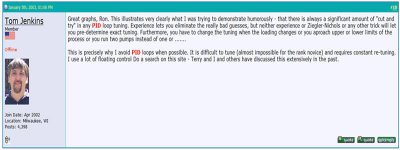I'm not sure what Ron or Tom posted, it was before my arrival here, but I've run into floating control in HVAC applications.
This link gives a fairly good description of floating control as I've encountered floating control in HVAC apps with an electric actuator driving a damper or a valve:
http://www.controltrends.org/tag/floating-control/
What they neglect to mention is that the controller is usually provided with a dead band zone such that when the process variable is within the zone, the output of the controller is a null output, meaning no output change (no output is not the same as "zero percent output" as in proportional control).
The deadband is desirable because otherwise the output would be changing continuously in one direction or the other, as it does in proportional control.
So a floating control controller output has only one state of three: either Off, one direction or the opposite direction.
For motorized actuators, that's OFF/CW/CCW or Off/forward/reverse.
Such motorized actuators typically are 3 wire - a common, power for driving in the forward direction; power for driving in the reverse direction.
When there is no power applied to either power lead, the motor holds its last position.
Some say that 'floating control" is the final control element "floating" at the last position.
Others claim that the "floating" is the process variable "floating" within the deadband zone.
I'm not sure which is correct, but the concept holds for electric partial turn rotary actuators used for dampers in HVAC.







